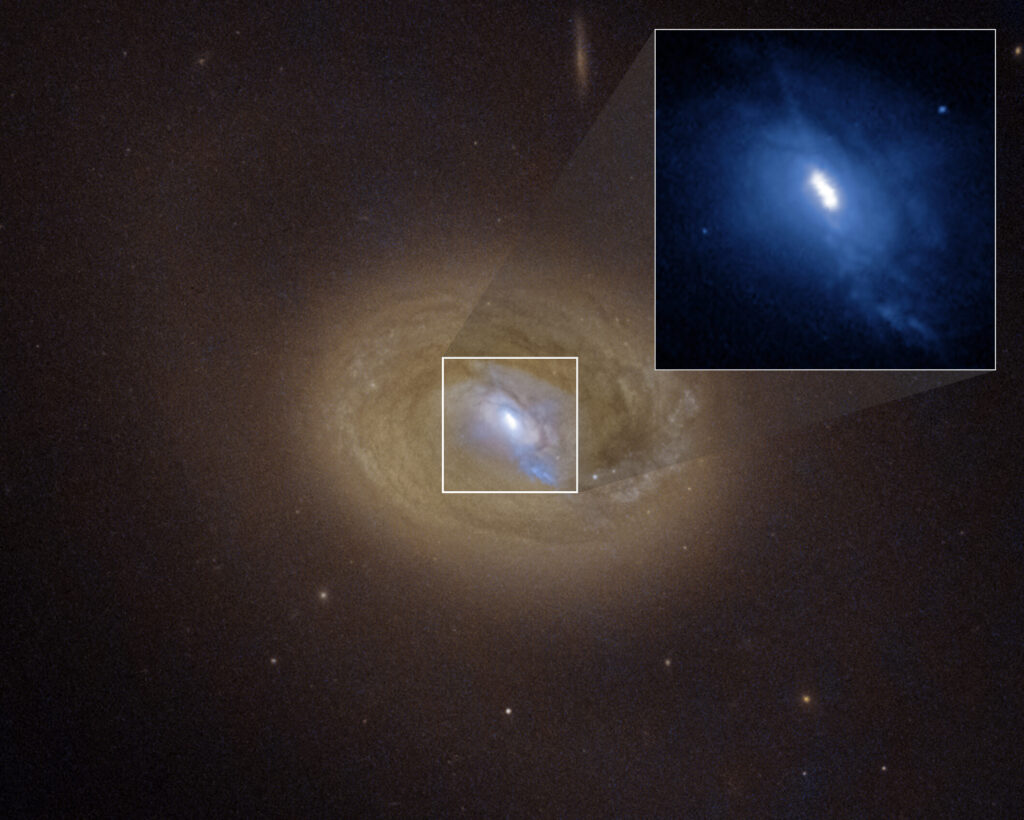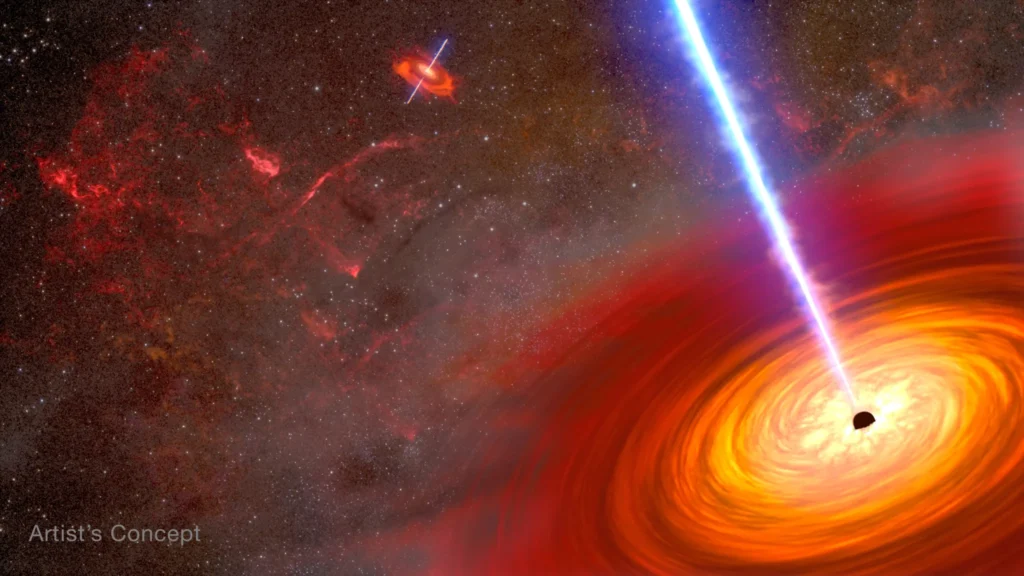The Hubble and Chandra space telescopes have confirmed the existence of a close pair of supermassive black holes. In the future, they will merge into a single object.

Astronomers have known several dozen pairs of supermassive black holes to date. They are located in colliding galaxies. Such duos are thought to have been more common in the early Universe, when galaxy mergers were much more frequent than now.
But now, thanks to the Hubble telescope, astronomers have a unique opportunity to study such a system in detail. It was able to detect the closest pair of black holes available for multiwavelength observations. It is located in the galaxy MCG-03-34-64, which is 800 million light-years away from Earth.
The discovery was made by accident. During high-resolution imaging, Hubble detected three diffraction beams emanating from the center of MCG-03-34-64. This is an image artifact that occurs when light from a very small region of space envelops the mirror of a telescope.
The presence of diffraction rays interested astronomers, because it indicated the presence of a large amount of luminous gas inside the galaxy, which in turn meant some processes were taking place inside it. Therefore, they photographed MCG-03-34-64 using the Chandra X-ray telescope. It was able to see two separate powerful sources of high-energy radiation, matching the bright optical points of light observed by Hubble.

Astronomers have concluded that these are two supermassive black holes. They are separated by a distance of only 300 light-years, which is much smaller than the other known to date similar duos. Black holes actively absorb matter, which is accompanied by the formation of a large amount of radiation in different ranges of the electromagnetic spectrum. For final confirmation, the scientists analyzed data in the radio band. They showed that the pair emitted powerful radio waves, which corresponded to the expected pattern.
The two supermassive black holes found by Hubble were once in the cores of their galaxies. As a result of the merger, they are now in close proximity to each other. The black holes will gradually spiral closer together until they finally merge. This will happen in 100 million years.
As for the third bright light source spotted by Hubble, its origin is still unknown. It may be a cloud of gas that has been shaken by the energy of a jet of superfast plasma (jets) released by one of the black holes.
According to NASA


